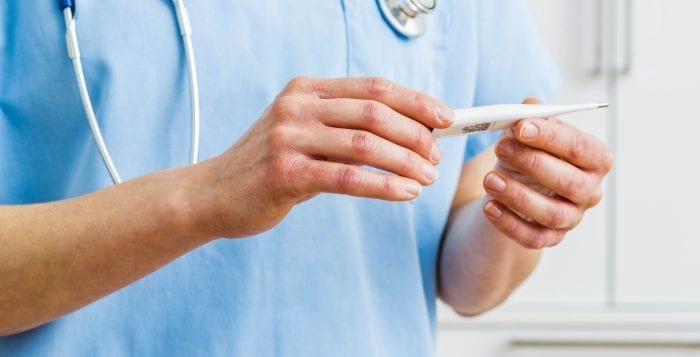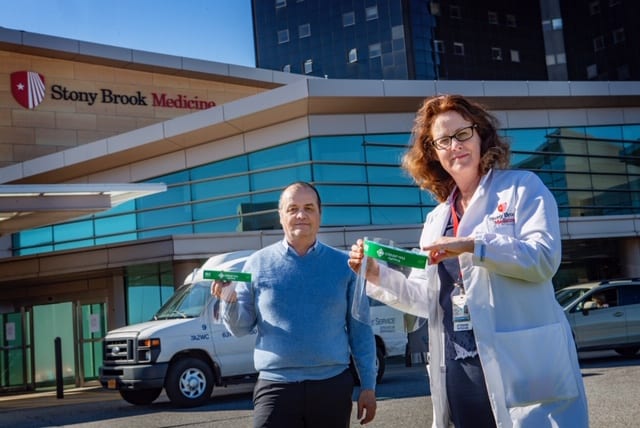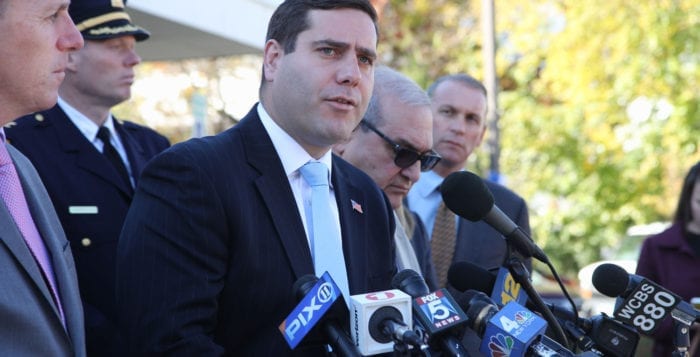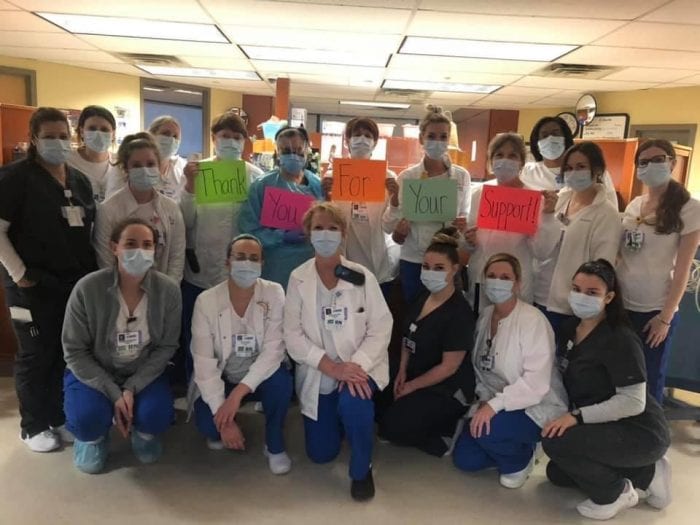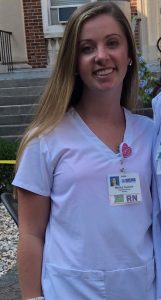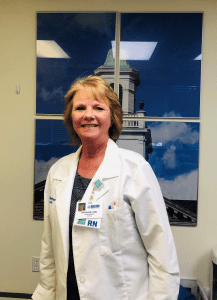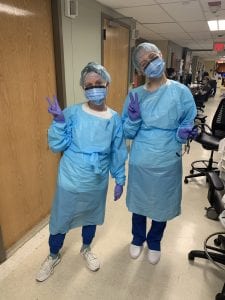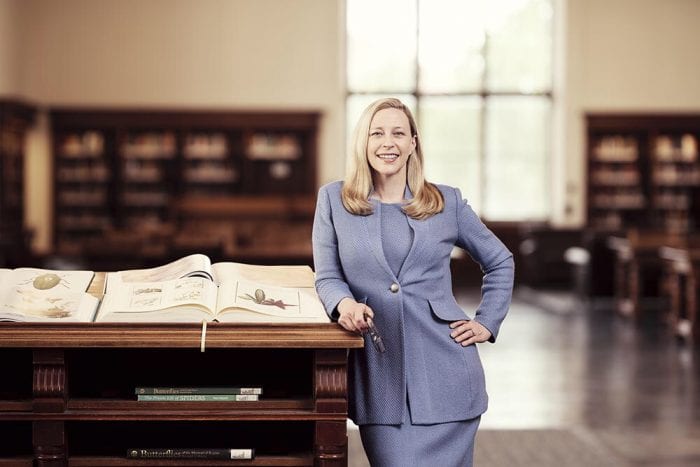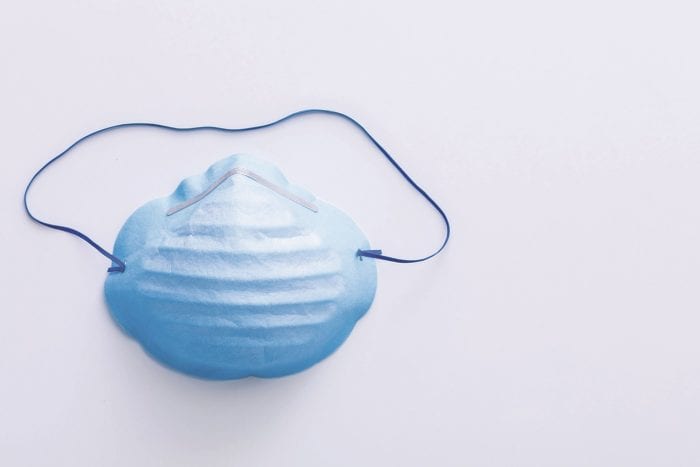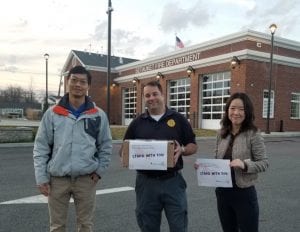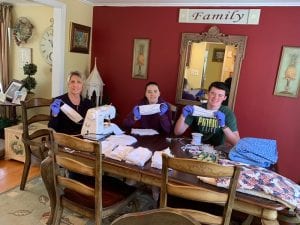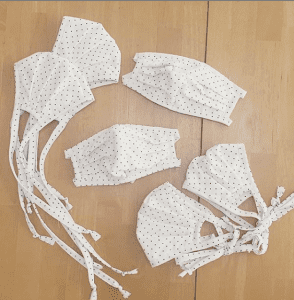Two weeks have made a huge difference for the health care community in the fight against COVID-19.
On April 10, hospitals throughout Suffolk County were struggling as 1,658 residents needed medical help to cope with the symptoms related to COVID-19. At the time, the Army Corps. of Engineers was racing to construct a hospital extension at Stony Brook that might handle more cases if the county continued on its trajectory.
Fortunately, the number of hospitalizations turned around, falling for the first time two days later, beginning a trend, with a few rises here and there, of fewer hospitalizations.
Indeed, over the last day, the number of people in Suffolk County hospitals declined by 143 people to 1,175, which means that, from the peak, the number of people separated from their homes and families has declined by over 29 percent.
This is “ great news,” County Executive Steve Bellone (D) said on his daily conference call with reporters. Bellone has been in the unenviable position of sharing details about the numbers of people who have been sick or who have died each day. The reduction in hospitalizations is a “huge jump, which is much higher than we’ve seen over the past few weeks,” he said.
Indeed, looking back to the dark days when the county became an epicenter for the virus, Bellone said his team had to discuss where to create a makeshift morgue, in the event that those who died exceeded the county’s capacity.
The county had considered using an ice rink as a temporary facility. Bellone nixed that, recognizing that children would eventually skate on that rink again. Instead, the county found an old processing facility, which they hoped they wouldn’t have to use but “unfortunately we have.”
As the Army Corps. of Engineers completed the construction of the Stony Brook Hospital Extension, Bellone again hoped the county wouldn’t need the additional hospital beds. So far, that has been the case, which, the county executive said, is a tribute to the residents who have respected social distancing rules and who have endured economic hardship as they have shuttered their businesses and remained at home.
The hospital extension is “empty today because of what everyone has been doing, because of the sacrifices that are being made right now,” Bellone said. “We have seen the incredible courage and bravery that has been displayed by health care workers and first responder agencies who have put themselves at risk. That is the reason why that hospital stands empty today.”
Gov. Andrew Cuomo announced new testing initiatives for those “essential” employees, including restaurant workers, grocery store workers, banks, laundromats and gas stations, just to name a few examples. The governor added it could be used for health care workers.
Testing of this kind is largely going to be handled by pharmacies. Cuomo said he will be signing an executive order allowing 5,000 independent pharmacies access to the testing.
In the last 24 hours, the number of people who have been discharged from the hospital has increased to 147, which is “another great number and a positive sign,” Bellone said.
The Intensive Care Unit has also experienced a drop in the number of patients, with a decline of 25 to 453.
The number of ICU beds currently available is 179, which is more than four times the number of beds available on April 10th, when the ICU had a low of 43 remaining beds in that unit.
Over the last 24 hours, the number of residents testing positive for Covid-19 has increased by 891 to 32,185, Bellone said. In total, the six hotspot sites have now conducted tests on 1,916 residents.
While the public health trends have been improving, the number of families who have suffered irretrievable losses through the pandemic have also passed a horrific milestone. Over the last 24 hours, the number of people who have died was 49, which means that one Suffolk County resident passed away each half hour. The total number of dead in Suffolk County from complications related to coroanvirus has climbed over 1,000, reaching 1,042.
The number of people who have died “continues to be staggering,” Bellone said, as he offered his thoughts and prayers to those who mourn the loss of family, friends, and neighbors.
Bellone’s office continues to look for personal protective equipment to help first responders and health care workers who are looking to heal and provide comfort to those afflicted with the disease. Bellone’s office has received another 100,000 ear loop masks and 3,000 face shields as a part of the county’s procurement order.
Continuing a process that began yesterday at a Stop & Shop in West Babylon, Bellone distributed cloth face coverings that he received from the federal and state governments to seniors at Leisure Village, Leisure Knolls and Leisure Glen. He was joined by Sarah Anker (D-Mt. Sinai).
“People were very happy to receive those face coverings,” Bellone said. “It’s important to distribute those out to the most vulnerable in our community.”
Bellone said the distribution plan for those face coverings would also include people who live in hotspot communities.
“We will be working with community-based organizations to identify need,” Bellone said.
For those looking to get back on the links, Bellone said golf courses will reopen starting on Monday, in line with the state policy. Golfers will be expected to follow social distancing guidelines and will need to spread out tee times by 15 minutes. Golfers can not use carts.

